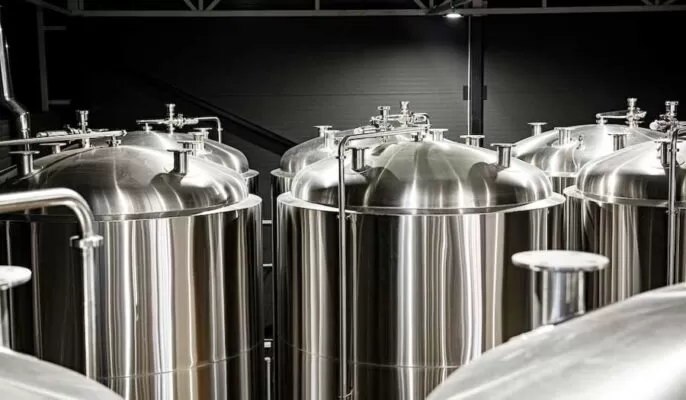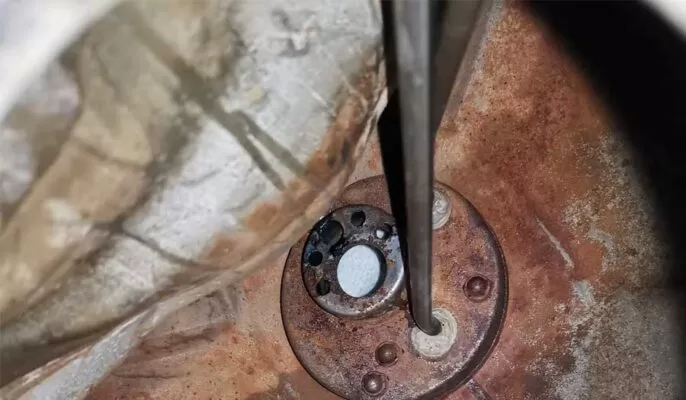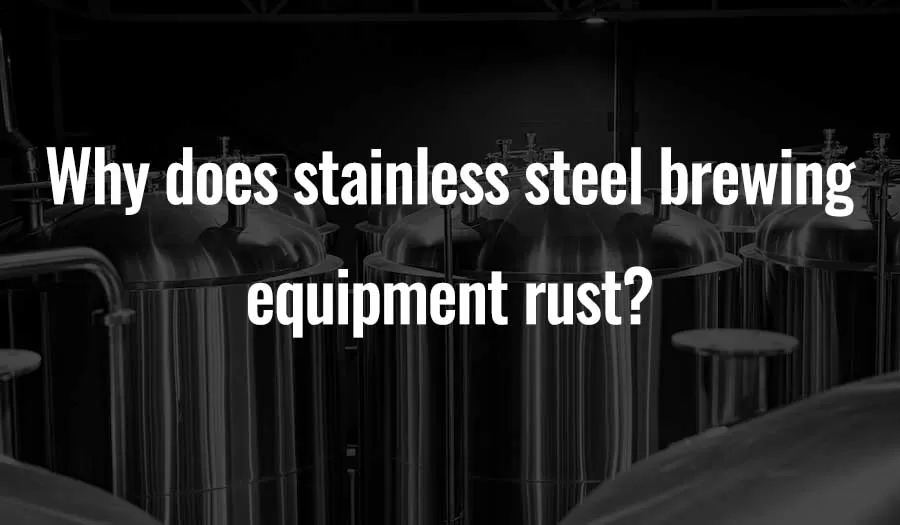Stainless steel brewing equipment is a popular choice for home brewers and commercial breweries alike due to its durability, strength, and resistance to corrosion. However, despite its name, stainless steel brewing equipment can still rust under certain conditions. In this article, we will explore the reasons why stainless steel brewing equipment rusts and how to prevent it.
Understanding Stainless Steel
Before we delve into why stainless steel brewing equipment rusts, let’s first understand what stainless steel is. Stainless steel is an alloy made of iron, carbon, and a minimum of 10.5% chromium. The chromium in the alloy reacts with oxygen to form a thin layer of chromium oxide on the surface of the metal. This layer, called the passive layer, protects the underlying metal from corrosion and rust.
However, the passive layer can be compromised by a variety of factors, including exposure to certain chemicals and environmental conditions, mechanical damage, and manufacturing defects. When the passive layer is compromised, the underlying metal is exposed to oxygen and can begin to rust.
Common Causes of Rust on Stainless Steel Brewing Equipment
Chloride Exposure
Chloride is a common element found in water, cleaning solutions, and some brewing ingredients. Exposure to chloride can cause pitting corrosion, which is a form of localized corrosion that creates small pits on the surface of the metal. These pits can weaken the metal and compromise the passive layer, leading to rust.
To prevent chloride exposure, it’s essential to use high-quality water in the brewing process, avoid using chlorine-based cleaning solutions, and thoroughly rinse all equipment after cleaning.

Low-Quality Stainless Steel
Not all stainless steel is created equal. There are various grades of stainless steel, each with different levels of corrosion resistance. Lower-quality stainless steel may contain less chromium or other alloys, making it more prone to corrosion and rust.
When purchasing brewing equipment, it’s essential to choose high-quality stainless steel with a high chromium content to ensure maximum corrosion resistance.
High-Temperature Exposure
Stainless steel can withstand high temperatures, but prolonged exposure to high temperatures can cause the passive layer to break down, leading to rust. This can occur during the brewing process, cleaning, or sterilization.
To prevent high-temperature exposure, avoid using high temperatures during the brewing process, use lower-temperature cleaning solutions, and limit exposure to high temperatures during sterilization.
Scratches and Other Mechanical Damage
Scratches and other forms of mechanical damage can also compromise the passive layer, leading to rust. This damage can occur during use or cleaning, and it’s essential to inspect equipment regularly for signs of wear and tear.
To prevent mechanical damage, avoid using abrasive cleaning materials, and handle equipment with care.
Preventing Rust on Stainless Steel Brewing Equipment
Now that we’ve discussed some of the common causes of rust on stainless steel brewing equipment let’s explore some tips for preventing rust:
Use High-Quality Stainless Steel
As mentioned earlier, not all stainless steel is created equal. When purchasing brewing equipment, it’s essential to choose high-quality stainless steel with a high chromium content to ensure maximum corrosion resistance.
Regular Maintenance
Regular maintenance is crucial for preventing rust on stainless steel brewing equipment. This includes inspecting equipment regularly for signs of wear and tear, cleaning equipment after each use, and storing equipment properly.

Avoid Chlorine-Based Cleaners
Chlorine-based cleaners can be harsh on stainless steel, causing pitting corrosion and compromising the passive layer. Instead, use non-chlorine-based cleaners and thoroughly rinse all equipment after cleaning.
Avoid High Temperatures
As we discussed earlier, high temperatures can cause the passive layer to break down, leading to rust. To prevent high-temperature exposure, use lower-temperature cleaning solutions, avoid using high temperatures during the brewing process, and limit exposured uring sterilization.
Use Passivation
Passivation is a chemical process that enhances the passive layer on stainless steel, making it more resistant to corrosion and rust. Passivation can be done using a variety of chemicals, including nitric acid, citric acid, and sodium dichromate.
It’s essential to follow the manufacturer’s instructions carefully when using passivation chemicals to ensure safe and effective use.
Store Equipment Properly
Storing equipment properly can also prevent rust on stainless steel brewing equipment. Store equipment in a dry, cool place, and avoid stacking equipment on top of each other.
Conclusion
Stainless steel brewing equipment is an excellent choice for home brewers and commercial breweries due to its durability, strength, and resistance to corrosion. However, it’s essential to understand that stainless steel can still rust under certain conditions.
Factors that can cause stainless steel brewing equipment to rust include chloride exposure, low-quality stainless steel, high-temperature exposure, and scratches or other mechanical damage.
To prevent rust on stainless steel brewing equipment, it’s essential to use high-quality stainless steel, regularly maintain equipment, avoid chlorine-based cleaners, avoid high temperatures, use passivation, and store equipment properly.
By following these tips, you can ensure that your stainless steel brewing equipment remains rust-free and in excellent condition for years to come.




